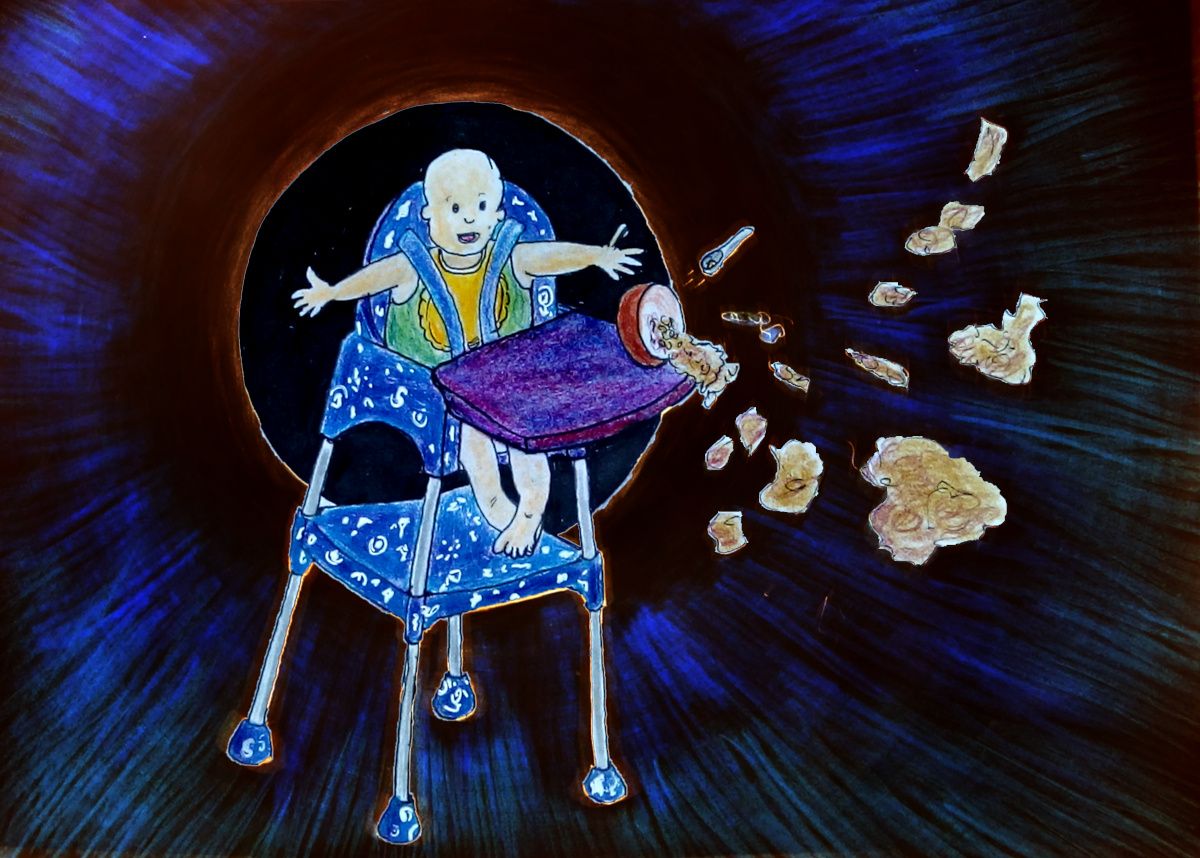Junior Moments
Those moments of being dismissed as too young and inexperienced? I hope they keep coming.

Those moments of being dismissed as too young and inexperienced? I hope they keep coming.
“You look younger than before”, commented one of my former graduate students as I entered the reception for the conference, in celebration of my 60th birthday, at the blissful Winnetu resort in Martha’s Vineyard. “The pandemic had a positive impact on my health”, I replied. “I jog every early morning for three miles and I was protected from outside nonsense; I can just focus on creative writing and research since I have no footprint on social media.
“The past two years have been the most productive period in my career, with a few hundreds of new essays and papers, a few thousand interviews, three new books, two new research projects, a documentary and a planned expedition. What could be better?”.
The answer was floating the air: a conference with junior colleagues. Let me explain.
When old people forget names, they apologise for having a ‘senior moment’. When young people’s ideas or innovations are cast aside by impatient ‘adults’, they face a ‘junior moment’.
Some may suggest—quite naïvely—that in the grey area between these two moments lies the sweet spot for being taken seriously; of being not too young, but not too old either. This is the area that is known, professionally, as being the ‘expert’.
In my experience, however, it is precisely such junior moments that make professional life worth living.
Often underappreciated by these so-called experts, junior moments hold the power to ‘reboot’ our thinking. Once the thrill of having junior moments fades out for you, you have officially turned into ‘dead wood’. The transition to “dead wood” is a matter of choice, not of biological age. I know of many old scientists who are innovative risk-takers, and a larger number of fledgling scientists who walk narrowly within the beaten path because of the peace-of-mind it brings.
The conference held in honour of my sixtieth birthday—kindly hosted by my former students, postdocs, and collaborators in astrophysics over the past four decades—brought to my mind many junior moments of my career, and here are a few.
It's the year 2000, and astronomers have identified a correlation between black holes and the stars within their sphere of influence. More specifically, they found a connection between the luminosity of surrounding stars and the mass of the black hole itself.
When stars emit radiation—be it invisible light or other invisible rays—astronomers realised they could measure the rates of radiation from those stars, and raise the resulting value to the fourth power, to get the mass of the black hole in the middle.
But where did this correlation come from? My idea is best illustrated as an example.
Picture a toddler who has consumed enough calories to attain extra energy - and who then, much to the dismay of its parents, proceeds to energetically shove the extra food off the table. Similarly, once the black hole gets saturated at a certain mass, it begins to expel the energy that feeds it. The self-regulation of a black hole depends on the well of gravitational potential it holds; the well that stores the gas it feeds on. The deeper the well, the more material goes flying—just like material from a deeper toddlers' bowl.
I theorised that this depth could be gauged not through luminosity but through the velocity dispersion of stars: observe their characteristic speeds to see how much the black hole disrupted them.
I proposed this very theory at a conference held in Leiden, the Netherlands. But the proposal was immediately dismissed as uninteresting or impractical by others at the conference; experts who knew much more about the topic than I did.
Upon returning to Harvard after my Netherlands conference, I attended two interesting lectures. These were by Laura Ferrarese and Karl Gebhardt, who were competing for an assistant professor post in our department. In their job talks, both of them presented a correlation between black hole mass and spheroid luminosity.
Despite being rebuffed by experts, I was still convinced that my alternate idea had something to it. So when I met the two lecturers independently, meetings with each of them, I brought up my idea to get a better handle on things. Instead of plotting the correlation with spheroid luminosity, I suggested they plot it instead in terms of the characteristic speeds in the spheroid of stars that surrounds them. The reason is simple. Black holes grow in mass by accreting gas from their host galaxy. The more massive they get, the more energy they release until they unbind the gas that feeds them. The situation is similar to a baby eating from a bowl until it becomes energetic enough to shove the food out of the bowl.
Two months later, I received an independent email from each of them, informing me that the correlation with velocity dispersion is right and that they were about to submit an exciting paper along with their research groups on the subject.
This later became the hottest result in this field for over a decade. Two teams fought fiercely among themselves, for the credit of being the first to derive the by now well-established correlation between black hole mass and velocity dispersion.
A common misperception about kids is that they are not as intelligent as adults, because they make more mistakes. The truth is, they merely lack experience and so get bruised when faced with challenges in a reality that is not familiar to them. That bruising hurts, but it allows kids to learn something new.
Adults have learned from experience what to expect, and are therefore better informed on how to avoid risks of being bruised. But what is that “experience”? It is usually no more than just past bruising.
Having been rebuffed in the past, adults learn to build a cushion of safety around themselves. Based on past experience, this cushion allows them to navigate through what is possible without taking dangerous risks. This cushion protects adults from bruises—but it also blocks their exposure to the unexpected.
A couple of years after the velocity dispersal incident, I recognised a way to test Einstein’s theory of gravity. One could do this by imaging the motion of a “lightbulb” at a particular region in the highly curved spacetime of a blackhole. Of course, putting an actual lightbulb there is impractical, but I conjectured that we could make use of naturally occurring “hot spots” in an accretion disk of gas. These “hot spots”, I proposed, would be heated through the reconnection of magnetic field lines that cross each other, just like the flares that occur on the surface of the Sun.
When I suggested this simple-minded idea to young “experts”, they dismissed it, arguing that the turbulent dynamics of gas near a black hole made any such “hot spot” unrealistic. If there was a “hot spot”, it would quickly dissipate or be sheared away by the rotating gas.
Based on my earlier experience with the black hole correlation idea, I decided not to give up and upon my return to Harvard, I suggested this idea as a research project to a young postdoctoral fellow, Avery Broderick, who had just arrived at our newly established Institute for Theory and Computation.
In the subsequent years, Avery and I wrote a series of papers on the observable consequences of a “hot spot” moving around the black hole Sgr A*. In other words, if there was a “hot spot” moving around there, we described what that would look like to us. Eventually, this data was confirmed through the Very Large Telescope Interferometer in Chile.
“Hot spots”, it turned out, did actually exist.
Adults can spend a lifetime insisting on wrong notions and building a psychological cushion that isolates them from evidence that would falsify these notions. This pattern is common in politics: as we all know, it took a kid in Danish author Hans Christian Andersen’s story to point out that “the emperor has no clothes”.
Unfortunately, since age correlates with increase in experience, being older is often confused with legitimate authority. Clothes or not, the real-world emperors usually continue unchallenged. Who, after all, would want to listen to a kid?
In academia, this authority is tied to seniority in a field: what the most experienced people proclaim in their field is largely accepted as the truth. But the nature of discovery involves new knowledge that was not anticipated by the baggage of past knowledge carried by the authority on the subject. In other words, it’s not included in the “cushion”.
As a result, “experts” tend to suppress innovation, because it threatens their pride of past knowledge which serves as the foundation for their professional reputation and self-esteem.
On the 8th of January 2014, a basketball-sized object crashed into the ocean, a hundred miles off the coast of Papua New Guinea. Months later, my student Amir Siraj and I discovered it in the CNEOS public catalogue.
This was the genesis of another junior moment, for we immediately identified it as an interstellar meteor: one that came not from our solar system, but from another star system far away.
When our paper was written in March 2019, meteor experts blocked its publication for three years. They argued that our conclusion cannot be trusted, because information on the meteor was still classified by the government, meaning scientists have no access to the uncertainties in the government data that underlined the CNEOS catalogue.
Eventually, the Office of US Space Command checked our calculations and confirmed to NASA the validity of our conclusion about the interstellar origin of CNEOS 2014-01-08.
This makes CNEOS 2014-01-08 the first major interstellar object discovered in the solar system, predating the famous ‘Oumuamua by almost four years. The newly released light curve of its fireball implies that it was tougher than iron meteorites. One major step that remains now is to raise funding for an expedition into the ocean, which will let us analyse the meteor directly.
They say truth is stranger than fiction, and this is no less true in scientific fields. Experts are undoubtedly the best people for day-to-day scientific work, and they are the ones who usually come up with the great discoveries in their field. But one mustn’t discount what a fresh perspective can bring in; one unencumbered by previous lines of thought.
Children, claims professor Scott Hershovitz, are the best philosophers because they question everything and look at the world in a different way. I feel in the same situation when I venture into a field different from my own.
Here’s hoping that these junior moments never stop. Innovation, and keeping an open mind ensures that there will always be progress forward. So never keep trying, never stifle your instincts, and, most importantly, never give up on your junior moments.
